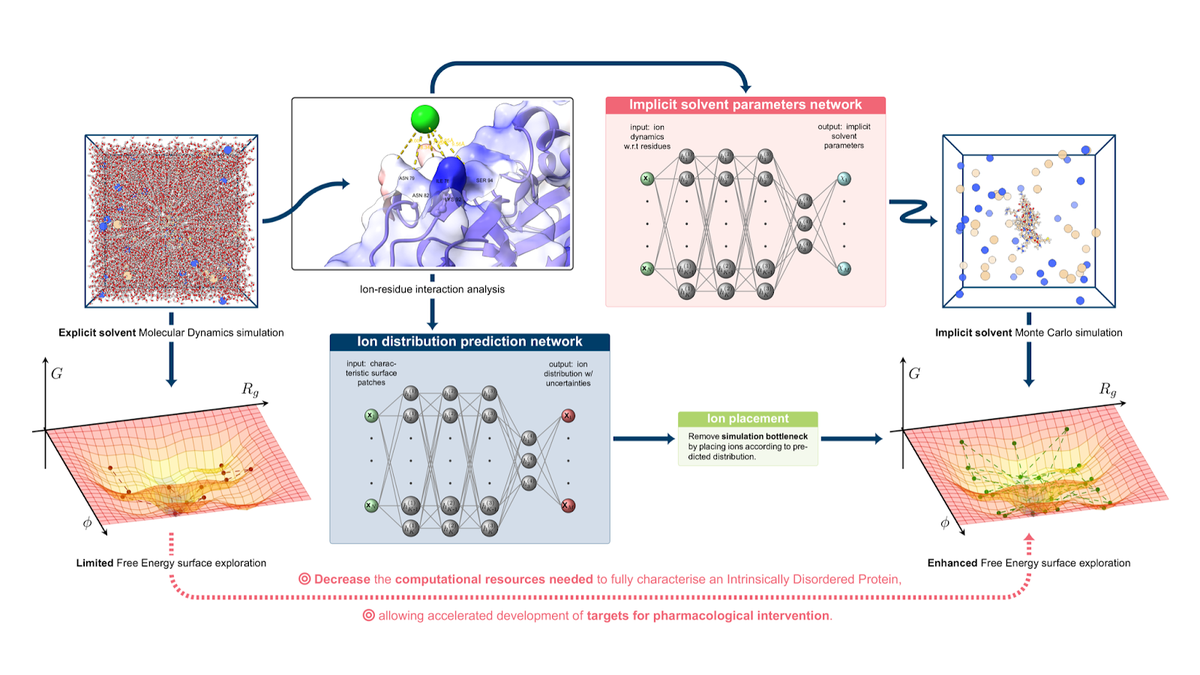Novel approaches for digital pharmacology
“If you think this Universe is bad, you should see some of the others.”
― Philip K. Dick
IDPs and Ions Clouds
Intrinsically disordered proteins (IDPs) are proteins which fundamentally lack a stable tertiary structure, instead existing in a whole ensemble of meta-stable states and only folding upon binding with a partner molecule. Their lack of stable tertiary structure makes them challenging to characterise using standard methods of structural biology.
IDPs structural ensembles are particularly susceptible to changes in solution conditions: ions in solution can neutralize local charge densities on IDP surface, stabilizing distinct conformational states from those visited in the absence of the ions.
Exploring these conformational ensembles using MD simulation is thus strongly rate limited by the slow equilibration of ions around IDPs. We are developing accelerated simulation methods that both take into account the strong interaction with ions to maintain accuracy while simultaneously removing the bottleneck that ion cloud equilibration represents.
To this end, we are working on integrating existing and new simulation data, experimental evidence and Machine Learning and Data Science methods through development of novel analysis and feature extraction methods.

People involved
Emile de Bruyn
Wissenschaftlicher Mitarbeiter und KI-Berater
- Jülich Supercomputing Centre (JSC)
Room 3002
Collaborators
- Dr. Olav Zimmermann (Jülich Supercomputing Centre)
- Prof. Dr. Martin Grohe (RWTH Aachen University)
Fundings

Allosteric Drugs for Receptor Mosaics
Understanding how receptors respond to stimuli in the brain is a tremendous challenge with relevant implications for human health. Over the last few years, receptors have been shown to function as both monomers and oligomers, i.e., macromolecular complexes composed of at least two different functional receptor units, displaying biochemical properties that are different from those of their monomeric components. These are the so-called “receptor mosaics” (RM). This project aims at shedding light on the pharmacological relevance of RMs, and discover new allosteric drugs for therapeutically meaningful systems.
People involved
Prof. Dr. Giulia Rossetti
Group leader of Drug Design Hub for Digital Neuropharmacology



